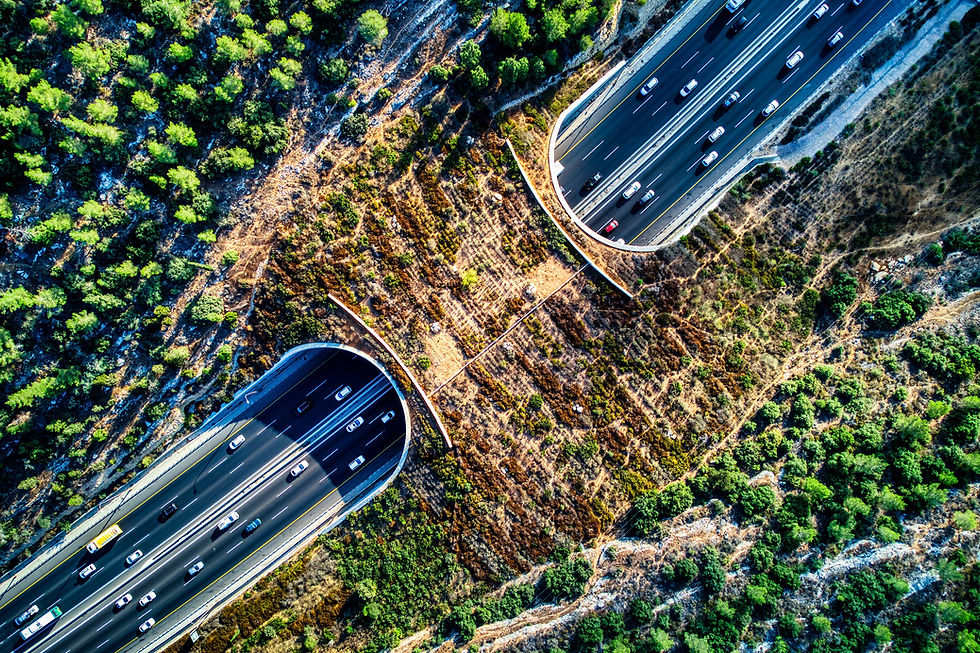Slow Down For Wildlife: Why Your Speed Can Make A Difference
- Kaitlyn Scheffler
- Jul 18
- 3 min read
Car Collisions - they're dangerous for people and animals. There are many ways to help save wildlife, but one of the best things that you can do is to slow down in wildlife areas. Why? Because there are a lot of animals that use roads as paths from one area to another, many road systems have cut through their native ranges and they have no choice but to cross the road, roads are often warm, especially at night which can attract reptiles and other animals to roadways.
Animals often use roadways to hunt, to keep warm, or as a travel path, just like us. However, they don’t understand vehicles and are often killed along roadways by accident. There are many things that we can do to help support wildlife along roadways while keeping ourselves safe too!
Before we highlight what actions you can take to help save wildlife on roadways, let’s look at some of the behaviors we notice from animals on roads and why that might be!
Walking across or stopped on Roads: many animals use roads as a path just like us, with roads cutting into their ecosystems, crossing the road may just be what they have to do to reach the water source or food source they need. Why are they stopped on the roads when you drive by? Well, you may have heard of Flight or Fight but there is a THIRD option! Some animals like squirrels FREEZE when they are afraid because it might hide them from predators who can’t see as well close up, or may convince a predator to leave them alone, or because there is a metal creature making super weird noises coming to them! Sometimes, a simple toot of your horn can help kickstart them into action, but they may not behave rationally so slowing down when you can for wildlife is always kindest.

Bird Collisions: Bird collisions happen frequently on roadways, especially at night. With bugs flying into your headlights, birds can swoop down and get hit. Other birds, like vultures, take advantage of roadkill as an easy source of food. This isn’t your fault, but slowing down and going the speed limit at night can help lower the frequency of car collisions with wildlife (both birds and mammals) you may not see! Especially because birds like vultures like to eat so much they have a hard time taking off! Everyone who has gorged themselves on a Thanksgiving dinner can probably relate though.

Reptiles Sitting on Roads: Roads are asphalt which absorbs heat better than earth! This means that reptiles like snakes, lizards, and turtles may use roads to get warm. Reptiles are cold-blooded and thus rely on external sources of heat to stay warm. Keeping an eye out for our reptile friends and allowing them to move off the road is always appreciated!

So what can we do to keep animals safe on roadways?
Slow down - especially around corners or at night
Go the speed limit
Support wildlife crossing areas and keep an eye out for wildlife crossing signs.
What is a Wildlife crossing? Wildlife highways are safe pathways that create safe crossings for wildlife and help to prevent unnecessary deaths of wildlife and people. They allow animals a safe place to cross the road and many states are starting to install them on roadways, reducing the number of animals that suffer from car collisions. Animals are using them too! They are not only learning how to use the crossings for safe passages, but studies are showing that they are teaching their young to use them as well! There are already several wildlife crossings in Georgia and we hope many more are built.

At Oatland Island Wildlife Center you may notice that a lot of the paths are over the land and that much of the island is in its natural state. We work hard to preserve the wildlife we care for while keeping wild places wild! It only takes one walk about the tour path to recognize that Oatland Island is a Wildlife Center dedicated to bringing you into nature!
To learn more about wildlife crossings and how you can support visit: https://highways.dot.gov/federal-lands/wildlife-crossings



Comments